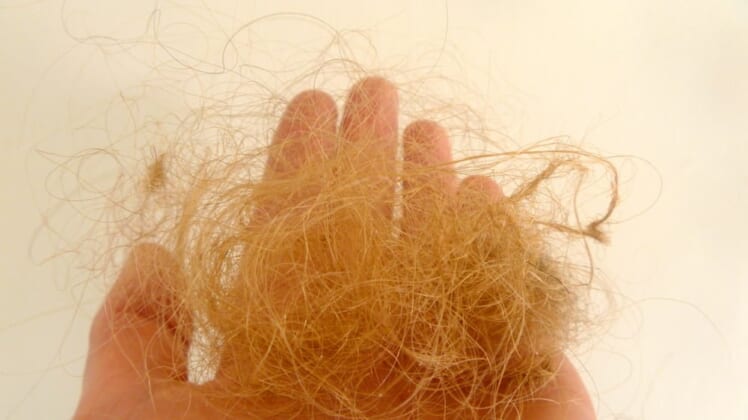
[bc_video video_id=”5490000596001″ account_id=”5374160583001″ player_id=”HJtnW6IQW”]
Whether you’d like to admit it or not, your appearance has great effect on your everyday life. Before going out in public, many women put on makeup and style their hair. Men might lift weights to shape their arms and upper bodies. If your hair starts thinning or balding noticeably, you may find yourself uneasy in public and lacking confidence. Thankfully, there is a way to predict hair loss regardless of your gender and get treatment before your condition worsens.
The Cause of Hair Loss
Hair loss can happen for a variety or combination of reasons, but it holds a close link to your inherited genes. In fact, your hair loss can come from genes on both sides of your family, resulting in a hair situation that is hard to predict.
One important hormone does play a big role in the condition, however, and that hormone is dihydrotestosterone (DHT). DHT actually aids in the development of men’s sex organs but is found in smaller amounts in women.
According to Dr. Alan J. Bauman, who founded Bauman Medical, hair loss occurs due to a heightened sensitivity to DHT, not directly because of the hormone. One of the main reasons for this extra sensitivity is your genes. Since Bauman attests that around 200 genes affect your hair growth, you can see why pinpointing the exact combination for hair loss proves so difficult.
Are Stomach Balloons the Future of Weight Loss?
A Test for Baldness
Despite the difficulty, researchers have found a way to predict hair loss. Doctors can perform a genetic test on both men and women, since the test is designed to identify people with a tendency for androgen alopecia. Most women experience hair loss because of this condition.
Doctors perform this test, called HairDX, by simply swabbing the inside of the cheek. They then use the DNA from the test to predict your propensity for baldness. According to Men’s Health, if a man tests positive with this genetic test, he will have a 6 in 10 chance of going bald before age 40.
HairDX can also test for a genetic variant. Eighty-five percent of men with the variant will not go bald by age 40, helping these men rest more easily. While the test is not certain, you can get a good idea of your genetic disposition by taking the test, no matter your gender.
If you do test positive, you can start treatment immediately, typically with Propecia (for men only) or Rogaine. These treatments are topical and may slow down the hair loss or encourage new growth. If you stop these treatments, the hair loss will continue. These two medications are the only FDA-approved treatments for alopecia.
Hair Loss in Men
As you have probably guessed, men have a much higher tendency for significant hair loss than women. The American Hair Loss Association states that nearly 2/3 of men will experience some type of hair loss by age 35.
At the same time, this condition can affect men of any age, starting at the end of puberty. Many men in their early 20s have high amounts of hair loss, and they accept it as a normal part of their lives.
Typically, when a man starts losing his hair, he will first see the hair line in the front start to recede. As time goes on, the hair on top of the head will thin out and stop growing altogether. Many times, the hair close to the ears and neck do not get affected in the same way, and researchers don’t currently understand why.
Female Pattern Hair Loss
While women’s hair loss does not occur at the same rate as in men, it happens more often than you think. About 1/3 of women will experience some form of hair loss (alopecia) throughout their lifetime, according to Harvard Health Publications. Also, the American Hair Loss Association reveals that it affects as many as 40 percent of women in the US.
[bc_video video_id=”5489989809001″ account_id=”5374160583001″ player_id=”default”]
Female pattern hair loss does not usually cause total baldness for a woman, however. She may notice some thinning near the part in her hair and dismiss it initially. After a while, she may see her part widen further and find more hair coming out in the shower or her hairbrush. Intervening early is key for retaining the hair.
Both men and women can suffer from hair loss throughout their lives, and the genetic link can come from either side of the family. You can, however, predict the hair loss through a genetic test designed for either gender. Either way, intervening early will identify any problems that could be causing it and help you keep more of your hair for a longer time.
